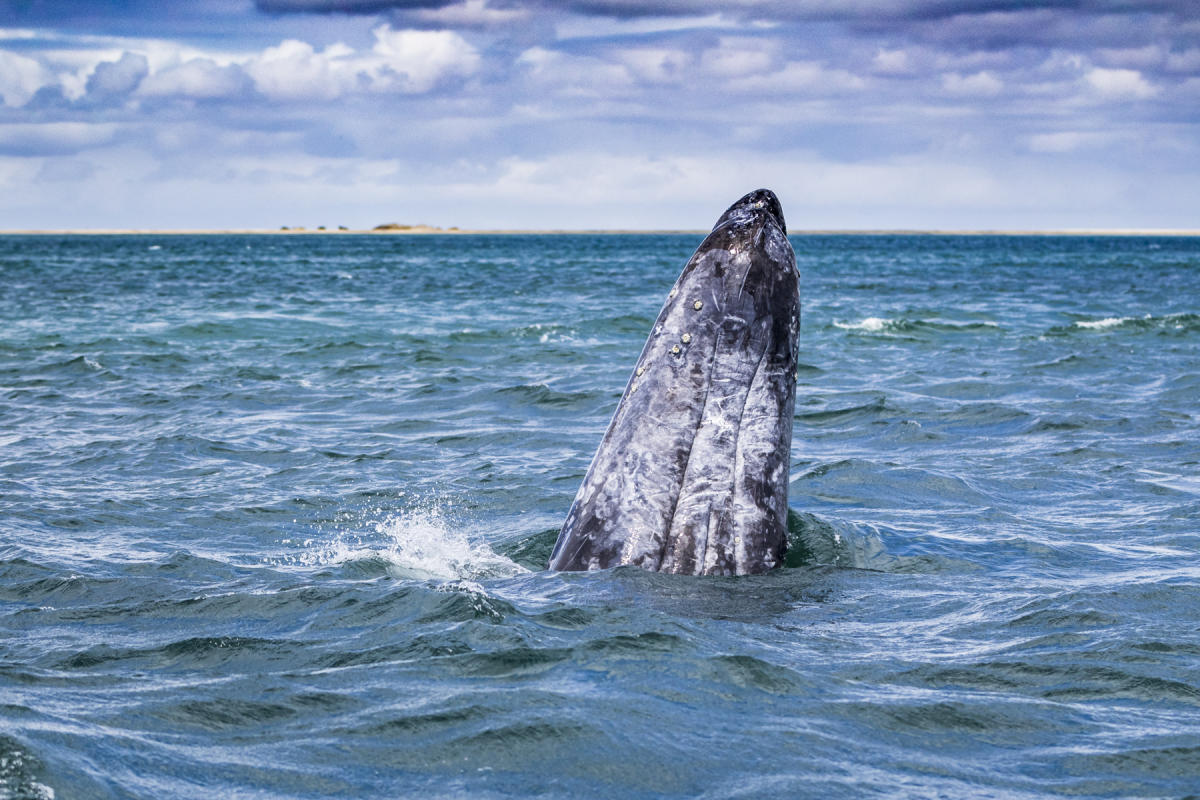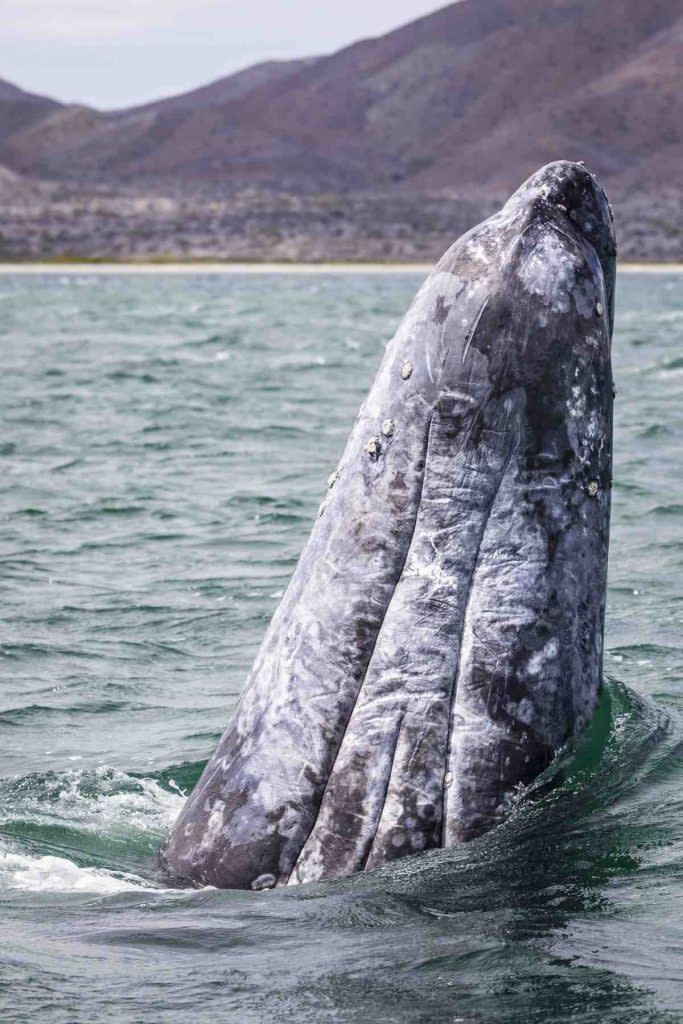Stay in the know
We’ll keep you up-to-date about the latest news, packages and deals.
Your browser is not supported for this experience.
We recommend using Chrome, Firefox, Edge, or Safari.
Baja California Sur offers the opportunity to observe these majestic marine giants which annually make the long journey of 20 thousand kilometers from the icy waters of the Bering Strait.
The gray whale watching season in Baja California begins in January and ends at the end of March in Bahía Magdalena and Laguna Ojo Liebre, within the Biosphere of the Vizcaíno Desert Reserve better known as the Gray Whale Sanctuary.
They are peaceful and friendly, which makes it easier for visitors to approach them to appreciate them. The service providers of La Paz will take you on a trip three hours north of the city to observe them.
The coasts of Baja California Sur are a natural wonder, and proof of that is the fact that gray whales have chosen these waters to reproduce and give birth to their calves year after year. Less than 100 years ago, gray whales were on the verge of extinction due to uncontrolled hunting and the lack of proper conservation policies. However, since the mid-20th century, international hunting bans have led to an increase in their population, and in 1994 the species was removed from the IUCN Red List. Today, it is estimated that the Pacific gray whale population has grown to over 25,000 individuals.
During the winter, whales make one of the longest migrations of any mammal, traveling over 15,000 kilometers from the Bering Sea in the north of the continent to Baja California Sur. Once they reach the peninsula, they gather in various bays, including Laguna Ojo de Liebre, Laguna San Ignacio, and Bahía Magdalena—the latter being the closest to La Paz.

To see gray whales, you need to travel to one of these bays. Bahía Magdalena is less than 3 hours away by car, so it’s possible to do the trip in a single day. On the other hand, Laguna San Ignacio and Ojo de Liebre are about 10 hours away by road, requiring a multi-day trip that can also be used to explore other parts of the peninsula.
In La Paz, tour operators offer trips ranging from one-day experiences that include transportation, meals, snacks, and the whale-watching tour, to two-day (or longer) trips with accommodations on the bay’s edge in glamping tents or local hotels, and more chances to see the whales up close.
If you prefer to travel on your own, you can rent a car in La Paz from local agencies and drive to one of the ports in Bahía Magdalena, such as Puerto Chale, San Carlos, or López Mateos, where you can hire the services of local cooperatives for whale watching. Be sure they have the proper permits and that their boats display the authorized provider flag.
The official whale watching season starts on December 15 in the San Ignacio and Ojo de Liebre lagoons, and on January 1 in Bahía Magdalena, extending through April 30 in all three locations. Regardless, before starting your trip, we recommend checking with local operators to confirm whale presence and weather conditions. This way, you can plan your itinerary to have the best possible experience and watch gray whales and their calves swim their first meters underwater before beginning their journey north.
